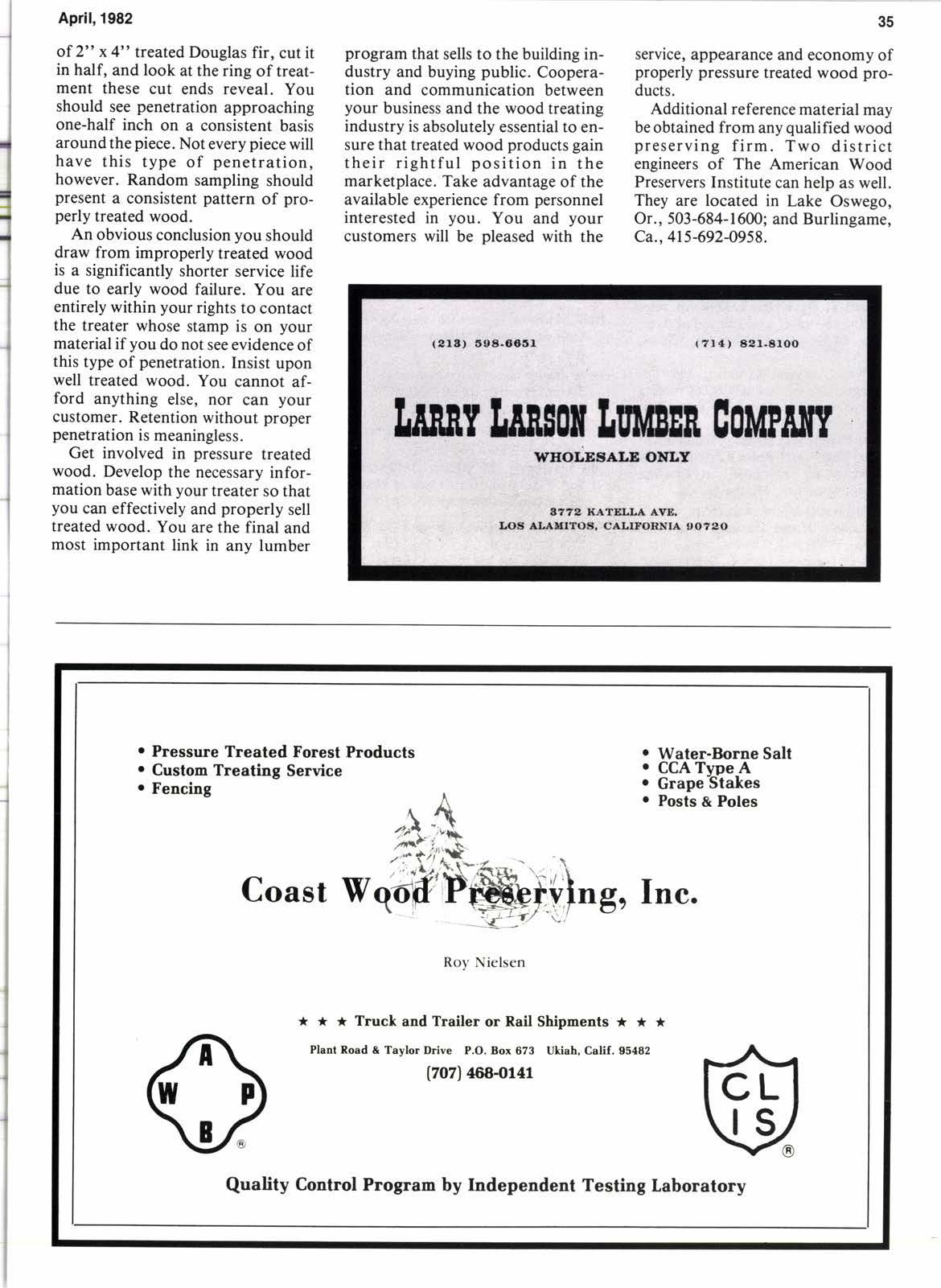
2 minute read
Come to AAATTCO for- TUMBER AND BUITDING MATERIATS
(Continued from page 8) ed but are used primarily for salt water contact applications.
Normal retentions follow: .25 pcfMost common retention, generally used for mudsill and by code must carry an LP-2 quality stamp of the American Wood Preservers Bureau (AWPB) if sold commercially. This retention permits above ground end uses only. It may be used for fence boards, fence rails and decking material.
.,10 pcfThis retention permits all ground contact end uses except All Weather Wood Foundation (AWWF). If sold in situations requiring building code approval, it must carry an AWPB LP-22 stamp. If you carry treated wood for consumer uses, .40 pcf is generally the preferred retention for inventory purposes. This retention allows for both above ground and in-ground contact and keeps the lumber yards from having to carry two separate inventories.
No moller whof your needs ore in building moferiols- dimension,glu-lom beoms, fimbers, Sunrise boords or Simpson Strong-Tie Hongersyou'll find them oll of Mollco. You con get the specie, type, grode ond size in the quonfity you con hondle of thof righl price. ll'll be profitoble for you, foo!. Give us o coll.
Phone 252 - 1961
.60 pcfThis retention is required for all structural members in ground contact situations (for example: pole barn stock 6x6) and it is at this retention level that the All Weather Wood Foundation gains acceptance and approval under all model building codes. AWWF material requires an'AWPB-FDN (foundation) stamp and both lumber and plywood must be kiln dried after treatment to 1990 or less moisture content. Applicable grades of lumber are rigidly set by industry design manuals (APA-NFPA).
A word of caution: when you encounter a specification calling for AWWF material, pleasb contact a qualified wood treater to discuss your method of supply. It is very important to secure material of both the proper grade, moisture content, and penetration to avoid potential problems with your local building department. AWPB-FDN stamps are mandatory. LP -2 or LP -22 material is not acceptable for wood foundation projects.
Peneiration: It is here that the greatest education is needed. Penetration is the depth to which the preservative has physically entered the treated wood. Penetration can be checked visibly. Simply take a piece of 2" x 4" treated Douglas fir, cut it in half, and look at the ring of treatment these cut ends reveal. You should see penetration approaching one-half inch on a consistent basis around the piece. Not every piece will have this type of penetration, however. Random sampling should present a consistent pattern of properly treated wood.
An obvious conclusion you should draw from improperly treated wood is a significantly shorter service life due to early wood failure. You are entirely within your rights to contact the treater whose stamp is on your material if you do not see evidence of this type of penetration. Insist upon well treated wood. You cannot afford anything else, nor can your customer. Retention without proper penetration is meaningless.
Get involved in pressure treated wood. Develop the necessary information base with your treater so that you can effectively and properly sell treated wood. You are the final and most important link in any lumber program that sells to the building industry and buying public. Cooperation and communication between your business and the wood treating industry is absolutely essential to ensure that treated wood products gain their rightful position in the marketplace. Take advantage of the available experience from personnel interested in you. You and your customers will be pleased with the service, appearance and economy of properly pressure treated wood products. o Water-Borne Salt

Additional reference material may be obtained from any qualified wood preserving firm. Two district engineers of The American Wood Preservers Institute can help as well. They are located in Lake Oswego, Or., 503-684-l 600; and Burlingame, Ca.,415-6924958.
. CCATvpeA o GrapeStakes o Posts & Poles









